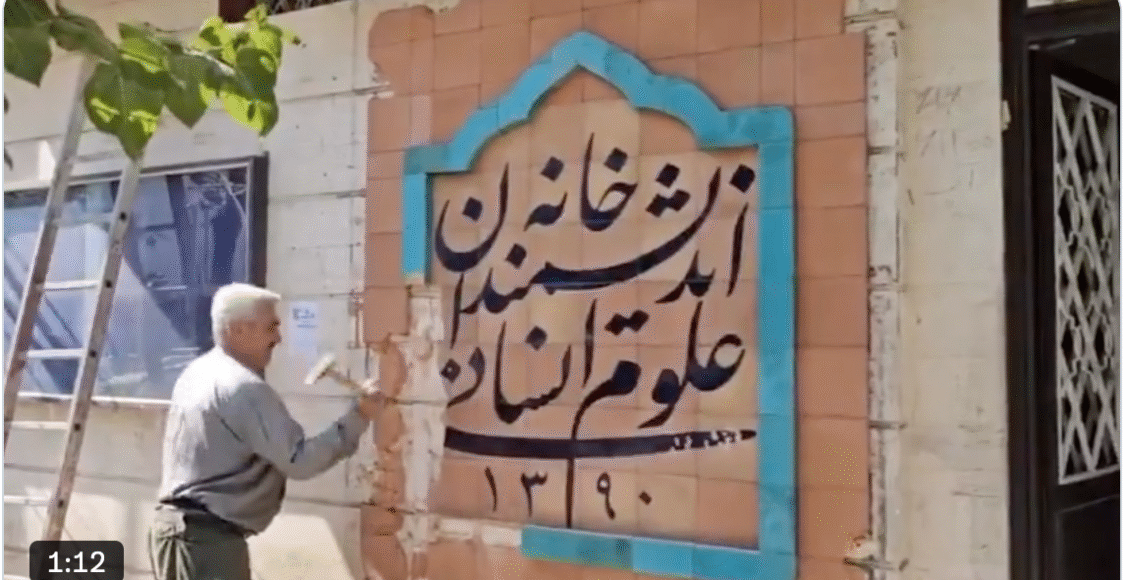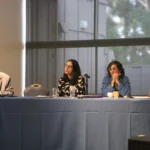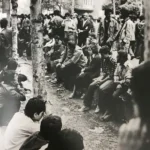Conceptual and Theoretical Inquiries into Iranian Society: The Sixth Conference, Tehran, September 2025
/Book Review | Reading Time: 7 minutes
A Report
Conceptual and Theoretical Inquiries into Iranian Society
The Sixth Conference, Tehran, September 2025

Setting aside the scattered early research efforts of the beginning of the 20th century, sociology in Iran has a seventy-year history during which many of its scholars have sought to create a space for articulating and explaining social issues and to contribute to finding remedies for societal problems. Along this path, at times rethinking the very concepts, theoretical tools, and methodological approaches of sociology itself has become necessary, in order to scrutinize common clichés and assumptions and to draw attention to perspectives and topics that had remained unexplored. Although such reflection is a routine part of sociological practice, large gatherings that bring together a wide range of research and theoretical work for collective discussion play a particularly significant role in revisiting the accomplishments and challenges of this field. The conference “Conceptual and Theoretical Inquiries into Iranian Society,” first held in May 2008 and now in its sixth iteration this year, is one of the initiatives of the Iranian Sociological Association that provides an opportune space-time for such reflection.
This year, the Conference was scheduled to be held from June 16-19, but due to what has come to be referred to as the twelve-day war between Iran and Israel, it was postponed and ultimately took place from October 6 to 9, 2025, with Abbas Varij Kazemi serving as the conference academic chair. According to the chair, however, this delay affected only the Tehran venue; the Association’s provincial branches held their sessions as planned in eleven cities. In total, the conference hosted more than 200 presentations.
The opening ceremony of the Tehran conference began with the reading of a message from Randall Collins, the American sociologist and professor emeritus at the University of Pennsylvania. This was followed by a lecture from Parviz Piran, the veteran Iranian sociologist, about Iranian society as “A Momentary Society.” The session concluded with the reading of Jeffrey Alexander’s address, the American sociologist, entitled “What Sociology Means from My Perspective.” In addition, Abbas Kazemi, the conference’s academic chair, and Mehdi Soleimaniyeh, chair of the conference’s special theme—“Futures and Possibilities of Iranian Society: Beyond Decline and Reconstruction”—outlined the distinctive features of this year’s conference.
Writing a report on a conference that covers such a wide range of topics—from rethinking sociological concepts, Iranian identity, and class to examining specific phenomena such as the lived experiences of children of spinal-cord-injured war veterans—is extremely challenging. Such a report can at best describe certain milestones and points of tension in the conference’s discussions, lectures, and panels. The conference’s main topics can be broadly categorized into three main areas: 1) revisiting the institution of the social sciences, 2) rethinking the concepts and theories of Iranian sociology, and 3) exploring pressing social problems in Iran.
Re-examining the Institution of Social Sciences
Thinking about the social sciences as both an institution and a social process constituted the central focus of the CTIIS conference. This involved reflecting on its post-revolution history—including the Cultural Revolution of the 1980s and the associated push for indigenization or Islamization of the social sciences—as well as revisiting the emergence of new research domains, such as studies of everyday life and critical realism.
Along this path, reexamining the university as the site where social science is produced and taught took on particular significance. Several essays at the conference focused on the university—its structure in contemporary Iran, its relationship with the state, and the challenges facing sociological education. A central theme in this context was the troubled relationship between state and social science faculties in Iran, as well as the state’s perspective on sociological intervention in society. Many speakers discussed the state’s rejection of policy-oriented sociology, reflecting the broader challenging relationship between the state and the social sciences in Iran. Numerous papers examined the role of government policies in creating, sustaining, or addressing social problems.
Rethinking the Concepts and Theories of Iranian Sociology
Rethinking the dominant sociological concepts and theories applied in recent years to describe and frame Iranian society was also a central focus of the conference. Some panels were specifically dedicated to speakers who critically examined these concepts and theories, while other presenters addressed the topic in their essays and papers outside of these panels.
Over the past two decades, many social science thinkers in Iran have been concerned with developing concepts to describe and analytically frame Iranian society. Such concepts and theories include Short-Term Society (Homayoun Katouzian), De-Modern Society (Hamidreza Jalaipour), Stagnant and Decadent Society (Seyed Javad Tabatabai), Networked Society of Face-to-Face Relations (Baqer Saroukhani), and Mobilized Society (Saeed Madani). While some scholars, such as Ebrahim Tawfiq, had critiqued some of these efforts as theorizing Iran through an orientalist lens, and others as exceptionalizing Iranian society, a stronger tendency at the conference was to analyze society within the framework of established theoretical paradigms, such as critical realism, interpretivism, and studies of everyday life. At the same time, some scholars continued to introduce new concepts to articulate their macro-narratives of Iran. As mentioned, Parviz Piran explored the concept of a “Momentary Society” and attempted to systematically frame it in his lecture. Other researchers introduced concepts such as “Dual and Spectacular Society,” “Society of Public Display,” “High-Risk Society,” and “Iran: The Logic of Refusal.” Some of these metaphor-driven or single-concept theories did not necessarily provide extensive analysis of Iranian society or rely on available data. Addressing the barriers to sociological theorizing in Iran, along with reevaluating disciplines and sub-disciplines within social sciences, was particularly important.
Last but not least, the special theme of the conference, Futures and Possibilities of Iranian Society, framed the current moment as transformative for Iranian society and led to discussions on the future of Iran and the impacts of the “Woman, Life, Freedom” movement of 2022.
Revisiting Social problems in Iran
Panels addressing pressing social problems in Iran made up the majority of the conference sessions. This revisiting had two dimensions: one focused on the social issues themselves, while the other examined how Iranian sociology has conceptualized and articulated them. The conference engaged with both aspects. Many scholars applied religious perspectives in addressing the topics like demographic changes, fertility, youth, aging, childhood, disabilities, and women’s and gender issues. The breadth of studies on social problems necessitated several panels dedicated to topics such as poverty, deprivation, and marginalization; digital culture and media; representations of Iranian society on social media; environmental challenges; and religious changes in the context of recent societal transformations.
On the other hand, some of these studies critically examined dominant narratives and research methods in the sociological study of social problems. For example, the ways in which sociology has addressed rural issues, defined the “woman question,” and other similar topics were subject to critical re-evaluation. New and emerging fields of study are developing within Iranian sociology, one of which that has attracted considerable interest is artificial intelligence. Several papers examined its connections to health and collective memory, as well as its role in urban life and economic marketing.
Notable Features of the Sixth CTIIS Conference
One of the notable features of the sixth CTIIS conference was the engagement of speakers representing a broader intellectual spectrum. They held opposing views both on Iran’s social problems and on the state of sociology in the country itself. The latter proved more contentious: while some sharply criticized the social sciences academy as intellectually weak, repetitive, and lacking commitment to the rigorous work of field research, others offered strong defenses of the achievements and historical development of the social sciences.
This diversity of perspectives was fully evident in the roundtable titled “Obstacles to Sociological Theorizing in Iran,” which featured several prominent figures in Iranian sociology. The panel included Taghi Azadarmaki (University of Tehran), Maghsoud Farasatkhah (Institute for Research and Planning in Higher Education), and Ebrahim Tawfiq (former lecturer at the University of Science and Culture). Among them, Tawfiq’s remarks—which sharply criticized professors’ disinterest in society and social research, as well as the complicity of some academics in the securitization of universities and the suppression and expulsion of dissenting students and faculty—resonated widely.
Additionally, student scientific organizations were provided with independent panels—through paper presentations and critical discussions—where they could voice their perspectives and concerns. Student associations from various universities across the country were given the opportunity to evaluate their own activities alongside those of other associations.
Other features included a focus on gender balance in the panels, which allowed for increased participation of women sociologists. One distinctive element was the allocation of dedicated panels for undergraduate and graduate students. The sixth CTIIS conference, following the routine of academic conferences worldwide, recognized the importance of student scholarly activity. Student associations from various universities also hosted independent panels to engage in meaningful discussions about their activities, and address their institutional challenges. The panel “Sociology in Informal Fields,” featuring mountaineer sociologists discussing their experiences during mountain expeditions, highlighted the organizers’ recognition of the social sciences beyond academia.
But perhaps most importantly, the conference had a nationwide scope. The unequal center–periphery relationship between Tehran (the capital) and the provinces has long been recognized in Iranian sociology as a significant barrier to the integration and recognition of knowledge produced outside the capital. The provincial component of this conference was considerable, encompassing ten major provinces, and the organizers made efforts to challenge this unequal dynamic. Another notable feature was the participation of several Iranian sociologists from Iranian studies academies abroad, who contributed to panels and served as keynote speakers at the closing session, sharing their experiences and perspectives.
Critical Considerations
Prior to and during the conference, several important criticisms were raised within social science circles, which it is necessary to acknowledge here. Among these critiques was the lack of attention to the mass deportation of Afghan migrants from Iran—labeled as “illegal migration”—which occurred just a few months before the conference. Despite thousands of Afghan migrants being expelled and returned to Afghanistan regardless of their migration history or circumstances, this event received no attention at the conference, except in a single paper.
The “Twelve-Day War” also went unaddressed. The academic chair recognized this gap in his opening remarks, stating that the program was closed before the war began.
He expressed hope that the topic would be addressed by some speakers; however, without the organization of a dedicated panel, it received little attention at the conference. Although the securitization of commentary on the war may have been one of the reasons for the absence of such a panel. Finally, the conference’s packed schedule often felt rushed. The high number of speakers and lengthy presentations left little to no time for discussions or meaningful Q&A sessions.
In conclusion, those familiar with Iran’s political environment, and the government’s approach to academic activity, and the bureaucratic landscape of universities recognize that simply holding such a conference is a major accomplishment. The success of this event should be gauged by its impacts on the “gray zone” between academia and civil society. If this conference, besides promoting dialogue within the university, managed to extend its reach beyond, inspiring civil activists to analyze Iran’s situation and take effective action, then it is deemed a success. In this regard, the sixth CTIIS conference can be viewed as a success.








Comments are closed.